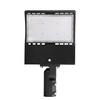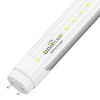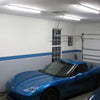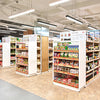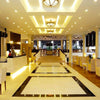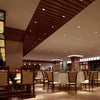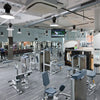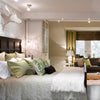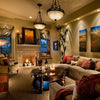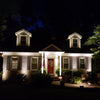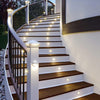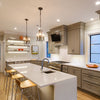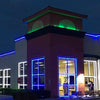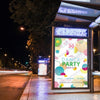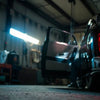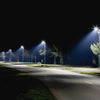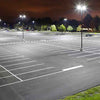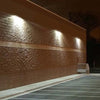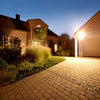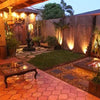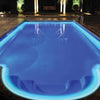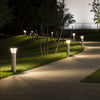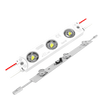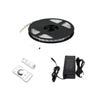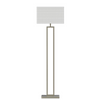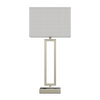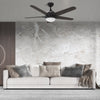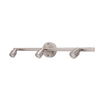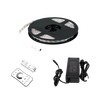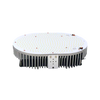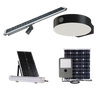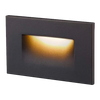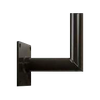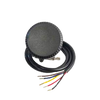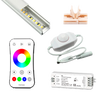Light Emitting Diodes (LEDs) have found their way into our world, and now they are part and parcel of our daily lives. From the circuit board signals that come with red and green LED lights to the world’s most significant buildings, LED lights are everywhere. Have you ever wondered the reason, as to why LED lights are so popular? Why do the manufacturers of devices choose red LED lights to signal a ‘cut off’ or the green ones for ‘safety’ reasons?
Here we are going to discuss 13 reasons that prove why most people prefer using LEDs over conventional lighting fixtures. Go through the list given below and figure out one (or more) reason(s) to make the shift towards LEDs. (If you have not yet switched to using LEDs.)
LEDs offer Longitivity

Most conventional lighting fixtures will last about a year or two if they are from the best manufacturers. However, LEDs offer a longer life in comparison with any existing incandescent or fluorescent fixtures. A comparison of LEDs with Incandescents and CFLs shows the difference in their lifespan, as follows:
- Incandescent Lifespan: ≈1000 operational hours
- CFL Lifespan: ≈10,000 operational hours
- LED tube Lifespan: ≈50,000 operational hours
LED lights last longer than most conventional lighting fixtures while wasting little energy. Read the next point to know how LEDs are energy-saving.
Provide Energy-efficient lighting
The LEDs convert almost 80-85% of input energy in the form of light of high lumen output. They provide more lumens per watt than incandescent or fluorescent lights. LED lights will remain cool even after long hours of use, as they do not lose much energy as heat. Thus, LEDs are safe around the children.
LEDs have high brightness.
As LED lighting fixtures provide light of high lumen output, they are more bright than conventional fixtures. A 6 watt LED fixture can replace a 40watt incandescent light bulb to providing with an equal amount of light while consuming less energy.
Wide range of Colors
Before the LED technology became popular, the availability of various colors in lighting fixtures was not widespread. No doubt, there existed lighting fixtures that emitted different colors, but their prices were high. Thus the inception of RGB LEDs is a blessing for those who love Christmas lights. (Or colorful lights for no reason!) One can shuffle and combine RGB LED lights in different intensities and produce a color of choice.
Instantaneous operation
Unlike the incandescent bulbs that need to heat up before illuminating or the fluorescent tubes that require a starter, LEDs provide instant service. As soon as one flips the switches, the LEDs light up.
Provide Directional lighting
The light from LED sources does not scatter as much as it does with non-LEDs. As the LEDs will emit the light in one direction, there will be minimum wastage of input energy while the fixture is working.
They are not affected by cold Temperature.

Most conventional lighting fixtures do not as they should in winters. However, the lumen output of LEDs is not affected by cold temperatures. Most LEDs can survive temperatures as low as 50°F.
Low Radiated Heat
Unlike conventional fixtures, LED lights will lose only around 5-10% of input energy in the form of heat. When incandescent bulbs illuminate, they operate by heating the filament to a level where it starts to glow. On the other hand, an LED emits electromagnetic energy, which means that LEDs convert the electrical energy into light energy, without needing the transmission of electricity into heat and then light energy.
Customizable
Most LED manufacturers provide options that allow customers to get LED lights for various lighting needs. The LEDs are compatible with motion sensors, remote control sensors, voltage regulators, and photocell sensors, among other customizations.
Recyclable

Unlike metal halide bulbs or CFL tubes, most parts of LED lighting fixtures are recyclable. In general, the casings of LED lighting fixtures feature plastic or tempered glass, which is recyclable. Since the LED lights have a greater lifespan than non-LEDs, their production does not take a heavy toll on the environment.
Non-toxic
LED lighting fixtures are safe for humans as well as the environment. Unlike metal halides and CFLs, LEDs do not emit infrared radiation that can cause harm to humans and animals. LED lighting fixtures are mercury-free, thus safe for long-term use.
Low-Voltage Operation
LED lighting fixtures operate with little energy consumption. Unlike conventional incandescent or fluorescent lighting fixtures, LEDs do not have to reach a threshold energy level before lighting up. Thus, they work on relatively low voltages to provide effective and efficient illumination.
No Radio Frequency Interference
LED lights do not hinder the operation of devices like television, radio, or microwave. As there are no unnecessary irradiations (infrared or U.V.) from LED lights, there are fewer chances that your T.V. or radio will make any weird noises as you turn on the lights.
Benefits of Using LEDs
- As there will be no need for frequent light fixture replacements, you can save money over the long-term use of LED lights.
- The use of LEDs will allow you to experience bright and soothing light of high color rendering index. (CRI)
- LED lights are available in a variety of colors. They also come in several correlated color temperatures. (CCT) Unlike the incandescents that emit a warm glow or the CFLs that provide day-like lighting effects, LEDs are available in medium to ultra-bright forms.
The Drawback
The major drawback of LED lights is that they are a bit on the costly side. However, if you see things like an optimist, the grass is green for you. An upfront investment in LED lighting fan saves you fixtures today can save you dollars over the years to come. You’ll be able to minimize the carbon footprint and contribute towards saving the environment and world energy. Being mindful of the choices that we make is crucial, so decide on what’s best for you.







